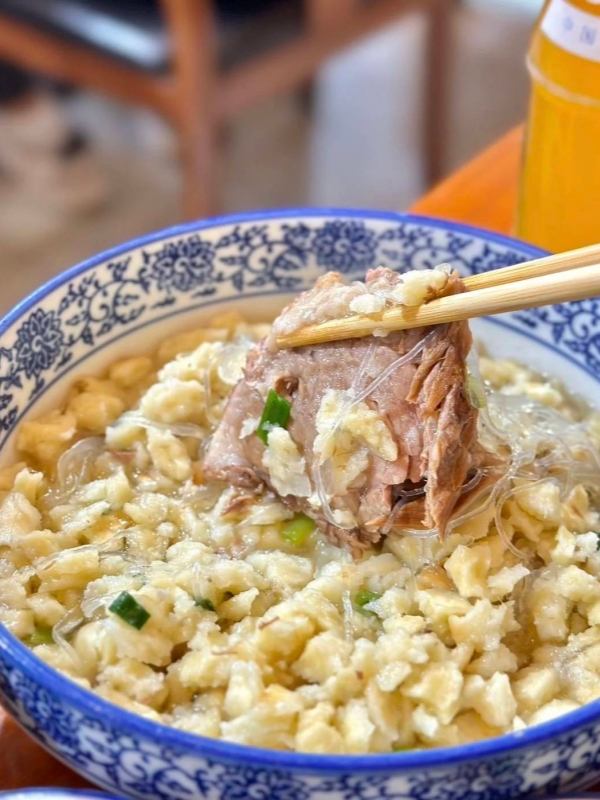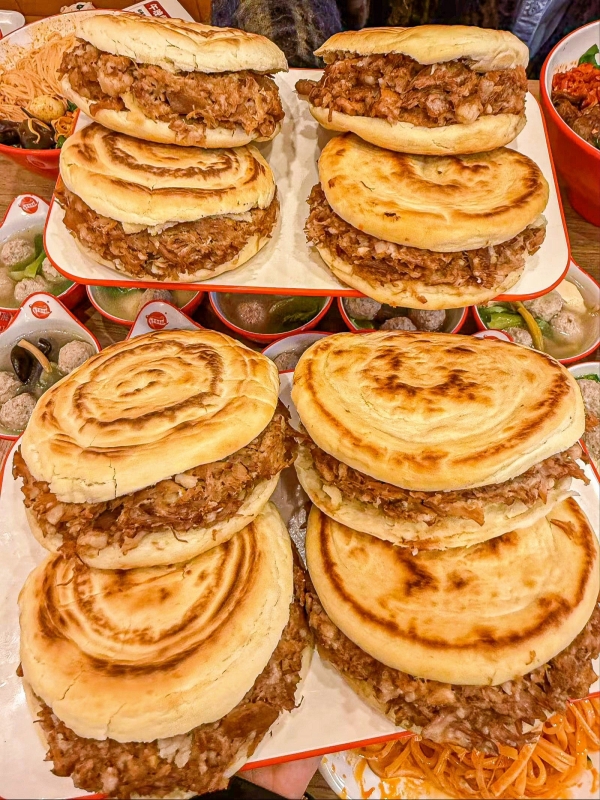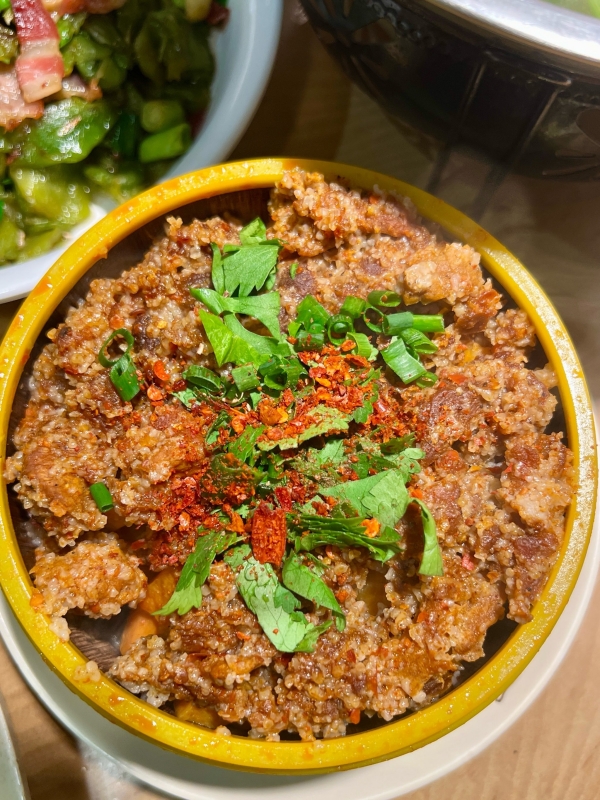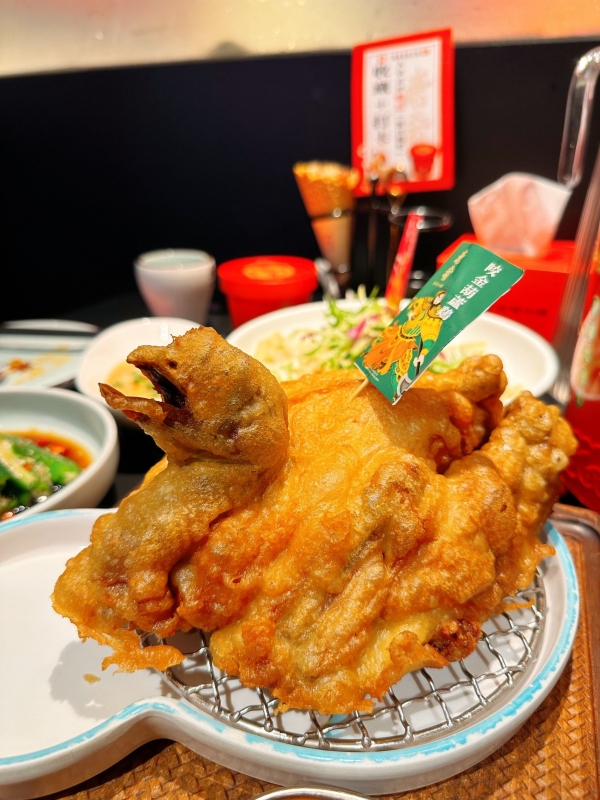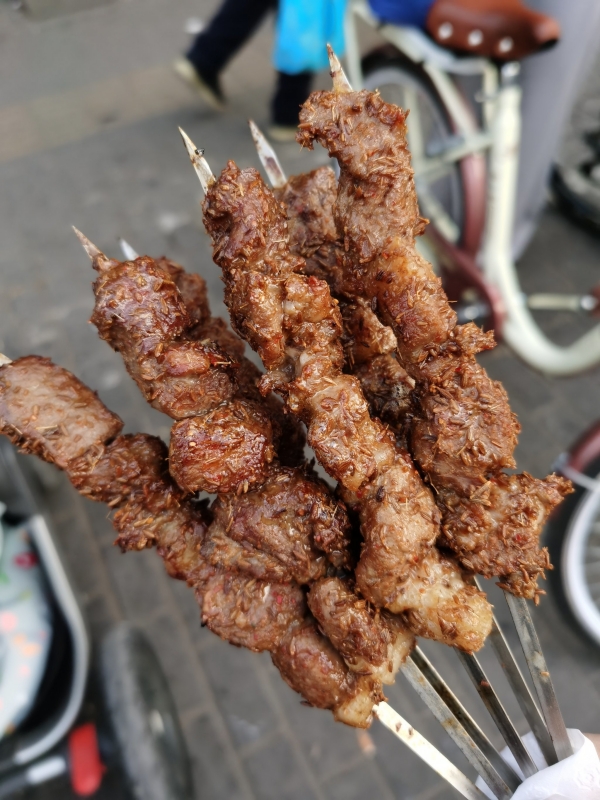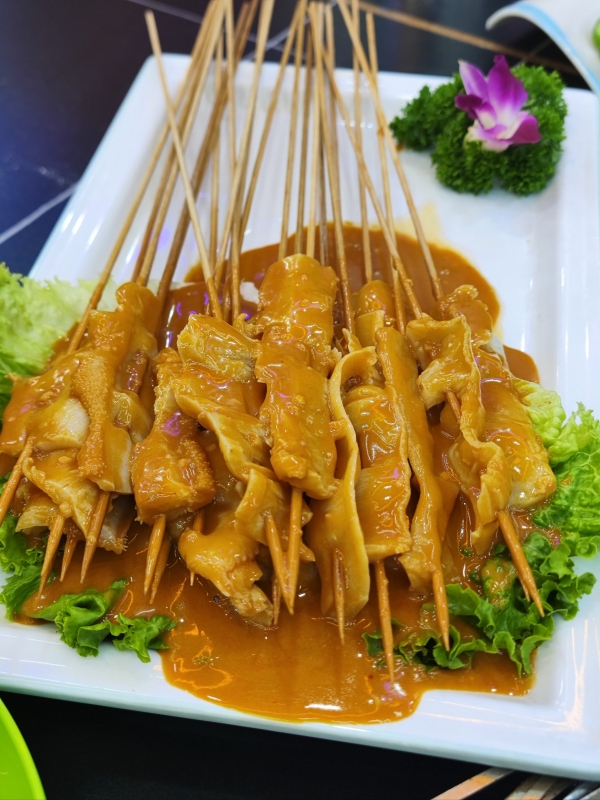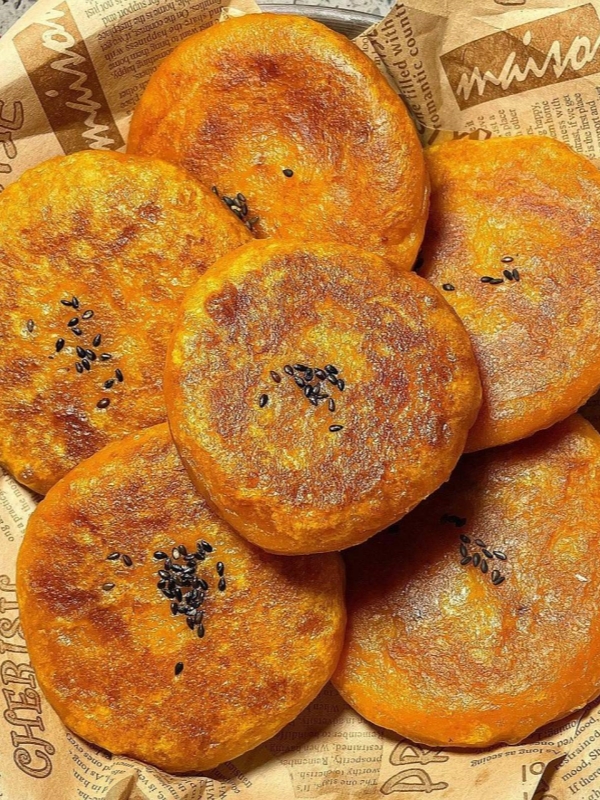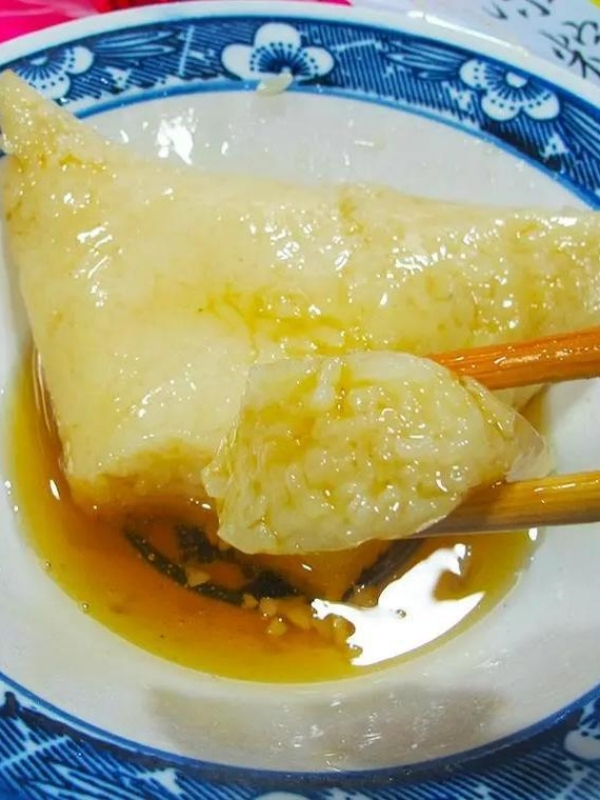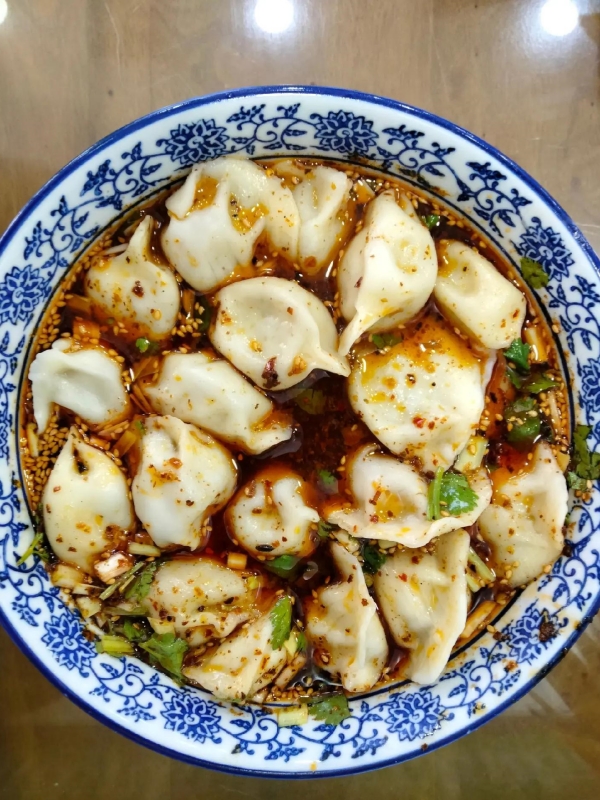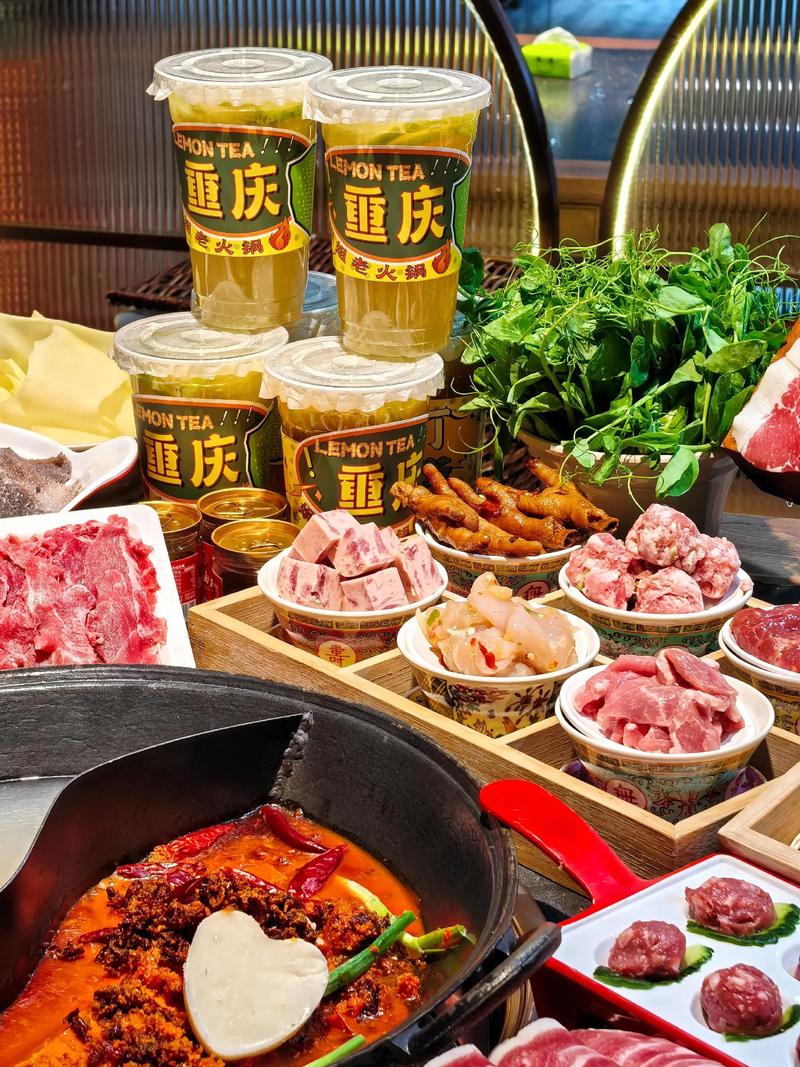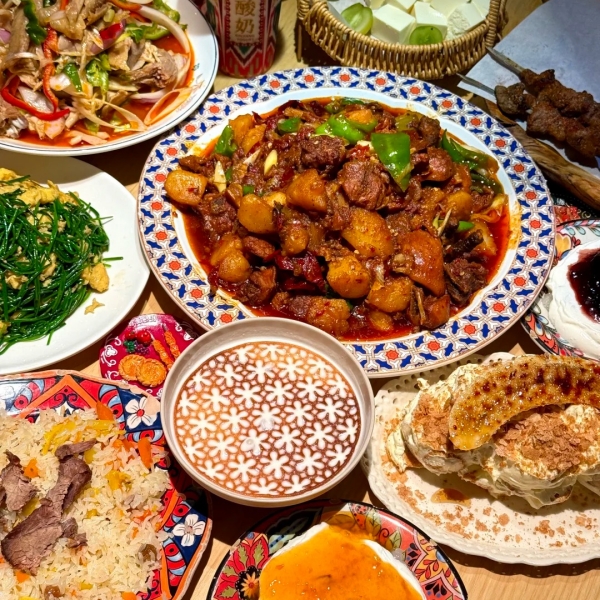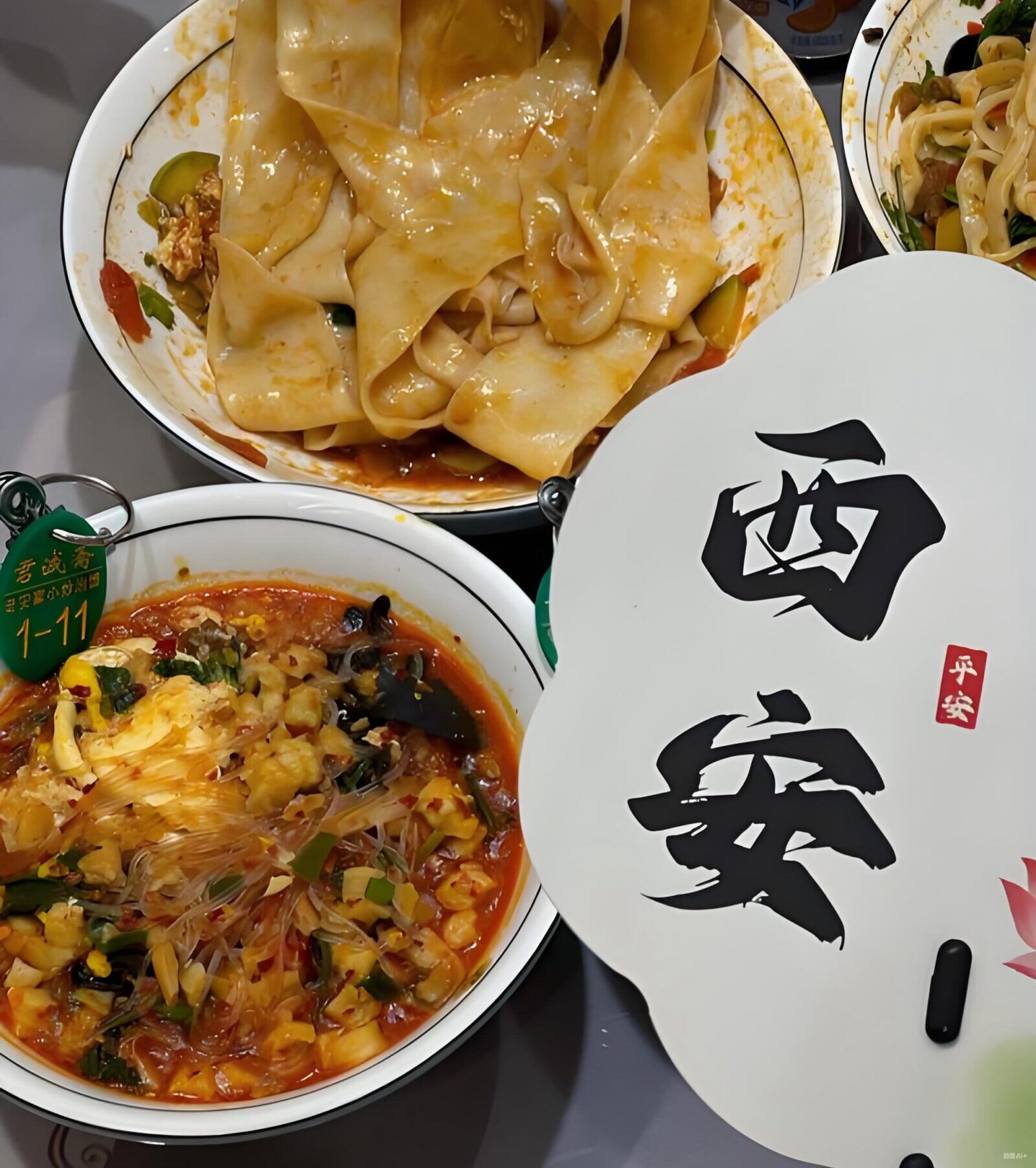
Xi'an Halal Food
Xi’an halal food is among the most authentic and tasty food in China. For over 1,300 years, the city’s Muslim Quarter has functioned as a crossroad of Silk Road spices and Chinese cooking. Today more than 60,000 Hui Muslims live in this neighborhood, attracting millions of visitors each year to their food culture. From the classic yangrou paomo (lamb bread soup) to hand-pulled biang biang noodles, there’s no other place on earth where you can savor halal food the way you can in Xi’an.
Whether or not you observe halal and love bold flavors, use this guide to discover all you need to know about Xi’an halal food.
Core Traits of Xi'an Halal Food
Xi'an halal food follows a religious doctrine known as “four specializations” (四专) meaning that all staff, all ingredients, all utensils, and all areas of food preparation are completely separated from anyone cooking non-halal food. It’s a crazy mix of Central Asian food and local Shaanxi Province cuisine. You’ll taste cumin, Sichuan peppercorn, and dried chilies in the same dish. Lamb, and beef rule the protein landscape. Noodles and bread come in forms that you can’t yet imagine.
Unlike Xinjiang halal food, which emphasizes grilled meats and pilaf, Xi'an specialties focus on soups, stews, and hand-crafted noodles. The bread-tearing ritual of yangrou paomo exists nowhere else in China. This interactive dining experience connects you directly to Tang Dynasty food culture. And sure, Xi’an’s halal comfort foods—from paomo to those hearty stews—are iconic, but they’re only one pixel in the giant picture, so check out Halal Food in China 2025: Pure, Honest, and Delicious to see the whole canvas.
Paomo Selections — The Soul of Xi'an Halal Cuisine, Featuring Soup-Based Bread Dishes
- Lamb Bread Soup (牛羊肉泡馍)
- Stir-Fried Bread Soup (小炒泡馍)
- Lao Mi Jia (老米家)
Lamb Bread Soup (牛羊肉泡馍) — Iconic Interactive Soup with Hand-Torn Bread
This is what defines Xi'an: Yangrou paomo has become legendary among foodies, with TripAdvisor reviewers declaring that it’s a “must-try” dish worth a trip to Xi’an.
Here’s how it works: the restaurant gives you a large bowl and two pieces of flatbread. It’s your job to tear the bread into tiny pieces—preferably fingernail-sized. This takes 10 to 15 minutes! Then, a chef cooks your bread fragments in rich southern lamb broth with tender meat, vermicelli noodles and green onions.
Why the tearing matters: Smaller pieces absorb more flavor. Locals say chefs judge your skill by your bread size. Machine-cut bread exists, but hand-torn pieces have jagged edges that catch more broth. It's a meditative ritual that connects you to centuries of Xi'an food culture.
Flavor profile: The broth tastes deep, meaty, and warming. Expect notes of star anise, cinnamon, and white pepper. The bread becomes pillowy-soft while the lamb stays tender. Pair it with pickled garlic cloves and chili paste for the full experience.
Where to eat it:
| Restaurant | Address | Price | Notes |
|---|---|---|---|
| Lao Sun Jia (老孙家) | No. 40 Xiyangshi, Muslim Quarter | ¥30-50 | Founded 1898, the most famous name |
| Tong Sheng Xiang (同盛祥) | No. 5 West Street, by Bell Tower | ¥50-60 | Second-floor dining room recommended |
| Lao Mi Jia (老米家) | No. 76 North Guangji Street | ¥40-60 | Local favorite, sells out by 3 PM |
A TripAdvisor reviewer noted: "Tong Sheng Xiang is where the locals go. Service and facilities were first class; the dish was fabulous."
Pitfall to avoid: Don't tear your bread too large. Pieces bigger than a pea will stay chewy and won't absorb the broth properly. Take your time—rushing defeats the purpose.
Stir-Fried Bread Soup (小炒泡馍) — Spicy Stir-Fried Version of Classic Paomo
This is yangrou paomo’s spicier cousin. Instead of simmering in broth, the bread gets stir-fried lamb, tomatoes, green pepper, and wood ear mushrooms. It’s tangier, more complex, and less soupy.
Xiao chao paomo is designed for travelers who fancy brighter, bolder flavors. It’s got a hint of vinegar to it and a few more vegetables. In the summertime, when hot soup gets heavy, this one is the way to go.
Where to eat it:
| Restaurant | Address | Price | Notes |
|---|---|---|---|
| Liu Xin Beef & Lamb Xiao Chao (刘信小炒) | Sajinqiao | ¥30-35 | Known as the "king" of xiao chao |
| Lao Wu Jia (老吴家) | No. 91 Dapiyuan | ~¥30 | Arrive early, always crowded |
Local secret: Order "you zhi de, mo yao xiao chao" (优质的,馍要小炒)—premium quality with stir-fried bread. Staff will know you understand the dish.
Noodles & Wheat Foods — Hand-Crafted Wheat Products with Silk Road Flavors
- Belt-Width Noodles (Biang Biang 面)
- Cold Sesame Noodles (麻酱凉皮)
- Soup Dumplings (灌汤包)
Belt-Width Noodles (Biang Biang 面) — Chewy Wide Noodles with Spicy Oil Splash
The name references the sound of the dough as it slaps against the counter: biang, biang, biang. These noodles are wide as a belt; in some spots they measure three inches across. The character in question has 58 strokes, one of the more absurdly complex ones in Chinese.
Texture is what this is all about. Biang biang noodles should be chewy, springy, and a little rough on the mouthfeel. They are topped with sizzling oil-flecked chili, minced pork or beef, and some fresh veggie. When the hot oil touches the chili flakes, the smell is insane.
The experience: Watch the noodle maker stretch and slap the dough. Order "you po" (油泼) style for the classic preparation. The noodles arrive with a mound of chili and raw garlic. Mix everything together before eating.
Where to eat it:
| Restaurant | Address | Price | Notes |
|---|---|---|---|
| Qingzhen Lao Jin Jia (清真老金家) | Muslim Quarter | ¥18-25 | Hand-pulled, halal certified |
| Biang Biang Noodle shops | Throughout Muslim Quarter | ¥15-22 | Look for noodle-making demonstrations |
Cold Sesame Noodles (麻酱凉皮) — Refreshing Cold Noodles with Nutty Sesame Paste
Summer in Xi'an demands liang pi. These slippery, translucent noodles come cold with thick sesame paste, chili oil, and black vinegar. The combination is refreshing, nutty, and addictive.
Liang pi uses rice or wheat starch, steamed into sheets, then cut into ribbons. The Muslim Quarter version features extra-generous sesame paste—a distinguishing characteristic of halal preparation.
Where to eat it:
| Restaurant | Address | Price | Notes |
|---|---|---|---|
| Sheng Zhi Wang (盛志望麻酱酿皮铺) | Dapiyuan main store | ¥12-18 | Most famous for sesame liang pi |
Best season: April through September. Some locals eat it year-round, but the cooling effect suits hot weather best.
Soup Dumplings (灌汤包) — Juicy Halal Dumplings with Rich Meat Broth
Xi'an's soup dumplings differ from Shanghai's xiao long bao. They're larger, filled with beef or lamb instead of pork, and pack serious soup inside. The wrappers are paper-thin—almost translucent.
How to eat without burning yourself: Bite a small hole first. Sip the hot soup through the opening. Then eat the remaining dumpling with vinegar. Never pop an entire guan tang bao in your mouth.
Where to eat it:
| Restaurant | Address | Price | Notes |
|---|---|---|---|
| Jia San Guan Tang Bao (贾三灌汤包) | Beiyuanmen, behind Drum Tower | ¥18-28 per steamer | Xi'an's most famous soup dumpling shop |
According to China Highlights, Jia San offers "thin, delicate wrappers filled with rib meat and bone broth—bite in, and a flavorful soup bursts out."
Lamb & Beef — Star Proteins in Xi'an Halal Food
- Chinese Hamburger (Rou Jia Mo, 肉夹馍)
- Steamed Meat with Rice Powder (粉蒸牛肉)
- Gourd-Shaped Chicken (葫芦鸡)
Cured Beef and Lamb (腊牛羊肉) — Tender Spiced Cured Meat for Snacking or Gifting
This is Xi'an's answer to deli meat—but far more flavorful. La rou uses traditional spice blends and slow curing methods passed down through generations. The meat emerges tender, salty-sweet, and deeply aromatic.
You can eat it straight, stuffed into bread, or packed as a souvenir. Vacuum-sealed packages travel well and make excellent gifts.
Where to buy it:
| Shop | Address | Price | Notes |
|---|---|---|---|
| Lao Tong Jia (辇止坡老童家) | Xiyangshi | ¥80-120/500g | Century-old shop, always queued |
| Liu Ji Xiao La Niu Yang Rou (刘纪孝腊牛羊肉) | Muslim Quarter | ¥75-100/500g | Another legendary name |
Shopping tip: Arrive before noon. Popular shops sell out quickly, especially before holidays.
Chinese Hamburger (Rou Jia Mo, 肉夹馍) — Crispy Bread Stuffed with Braised Meat
Rou jia mo is about 2,000 years older than the hamburger. A simple idea: slow-braised meat stuffed into crispy flatbread. Not so simple to make.
The version from Xi'an eschews pork in favor of beef or lamb and uses a specific form of bread (mo), one that’s freshly baked so that the outside is crispy while the inside stays soft. The meat is chopped and mixed with its cooking juices on order.
What makes it special: Good rou jia mo balances textures. Each bite delivers crunch, then tenderness, then rich meat flavor. The bread acts as a flavor sponge without getting soggy.
Where to eat it:
| Restaurant | Address | Price | Notes |
|---|---|---|---|
| Qingzhen La Ma Jia Mo (清真拉妈夹馍) | Muslim Quarter | ¥15-22 | Generous portions |
Steamed Meat with Rice Powder (粉蒸牛羊肉) — Tender Meat Coated in Spiced Rice Powder
This dish coats lamb or beef in spiced rice powder, then steams it until impossibly tender. The rice absorbs meat juices and creates a unique texture—part grainy, part silky.
Where to eat it:
| Restaurant | Address | Price | Notes |
|---|---|---|---|
| Xiao Fang Zi Liu Jia (小房子刘家粉蒸肉) | Muslim Quarter | ¥25-35 | Classic preparation |
Gourd-Shaped Chicken (葫芦鸡) — Crispy-Skinned Deboned Fried Chicken
Though chicken appears less frequently in Xi'an halal cuisine, hu lu ji deserves mention. The whole chicken is deboned, marinated, and deep-fried until the skin turns golden and crackly. Its shape resembles a gourd—hence the name.
Texture: Shatteringly crispy skin, juicy meat underneath. Best eaten immediately while still hot.
BBQ — Night Market Delights in Xi'an Muslim Quarter
- Grilled Lamb Skewers(烤羊肉串)
- Quick-Boiled Beef Tripe (涮牛肚)
- Xi’an Muslim Quarter Night Market
The Muslim Quarter transforms after dark. Smoke rises from countless grills. The smell of cumin and lamb fat fills the air. This is Xi'an street food at its most visceral.
Best time to visit: After 8:00 PM, when the night market reaches full swing.
Grilled Lamb & Beef Skewers (烤羊肉串 / 烤牛肉串) — Charcoal-Grilled Skewers with Cumin
Yang rou chuan (lamb skewers) are Xi'an's most iconic street food. Fresh meat gets threaded on metal skewers, grilled over charcoal, and dusted with cumin, chili flakes, and salt.
What to look for: Choose stalls that skewer meat fresh rather than displaying pre-made skewers. The grill should glow red-hot. Meat should sizzle immediately upon contact.
Where to eat it:
| Stall/Restaurant | Address | Price | Notes |
|---|---|---|---|
| Qingzhen Gang Gang Kao Rou (清真刚刚烤肉) | Multiple locations | ¥5-8 per skewer | 2025 Dianping "Must-Eat" list |
| Gao Jia Kao Rou (高家烤肉) | Dapiyuan | ¥4-7 per skewer | Old establishment, precise technique |
Food safety note: One TripAdvisor reviewer advised choosing "stalls set back from the road" and requesting fresh skewers, especially in summer months.
Quick-Boiled Beef Tripe (涮牛肚) — Crispy Tripe Blanched and Dipped in Sesame Sauce
Thinly sliced tripe gets blanched in boiling broth for seconds, then dipped in sesame sauce and chili oil. The result is crunchy, slightly chewy, and deeply savory.
Where to eat it:
| Restaurant | Address | Price | Notes |
|---|---|---|---|
| Qingzhen Mu Sa Sha Guo Dian (清真穆萨砂锅店) | Muslim Quarter | ¥25-40 | Tripe with sesame sauce is their specialty |
Grilled Kidney & Tendon (烤腰子 / 烤筋) — Savory Grilled Offal and Tendon
These items appear on every night market grill. Kidney (yao zi) tastes rich and mineral-y when fresh. Tendon (jin) offers pure chew—Q-bouncy and satisfying.
Where to eat it:
| Restaurant | Address | Price | Notes |
|---|---|---|---|
| Gao Jia Kao Rou (高家烤肉) | Dapiyuan | ¥8-15 per skewer | Known for precise grilling |
A visitor shared: "We waited 40 minutes at Gao Jia around 9 PM. The tendon's chewiness and the kidney's freshness made it worth every minute."
Specialty Snacks — Hidden Gems Beyond the Main Street of Muslim Quarter
- Persimmon Cakes (黄桂柿子饼)
- Honey Cold Rice Dumplings (蜂蜜凉粽子)
- Sour Soup Dumplings (酸汤水饺)
Sticky Rice and Date Cake (Zeng Gao, 甑糕) — Sweet Layered Rice Cake with Dates and Beans
Zeng gao is Xi'an's comfort dessert. Layers of glutinous rice, red dates, and kidney beans steam together in a deep clay pot. The result is sticky, sweet, and naturally colored in red and white stripes.
Flavor profile: The dates caramelize slightly during steaming, creating pockets of intense sweetness. The rice stays chewy. No added sugar needed—the fruit provides everything.
Where to eat it:
| Shop | Address | Price | Notes |
|---|---|---|---|
| Xiao Jia Tian Shi Dian (小贾甜食店) | Dapiyuan | ¥8-15 | Also serves persimmon cakes |
| Dong Nan Ya Zeng Gao | Corner of North Guangji St & Xiyangshi | ¥10-15 | Recommended by multiple guides |
Persimmon Cakes (黄桂柿子饼) — Crispy Pastries with Persimmon and Bean Paste
Ripe persimmons get mashed with flour, filled with sweet bean paste, and pan-fried until golden. The osmanthus (huang gui) adds floral fragrance. These cakes taste best in autumn when persimmons peak.
Texture: Crispy exterior, soft and jammy interior. The persimmon adds natural sweetness and moisture.
Best season: September through November.
Honey Cold Rice Dumplings (蜂蜜凉粽子) — Chilled Glutinous Rice Dumplings with Honey
Unlike hot zongzi eaten elsewhere in China, Xi'an serves them cold with honey drizzled on top. The glutinous rice becomes dense and chewy when chilled—perfect for hot summer days.
Best season: May through August.
Sour Soup Dumplings (酸汤水饺) — Thin-Skinned Dumplings in Tangy Spicy Broth
Thin-skinned dumplings swim in a tangy, slightly spicy broth with cilantro and chili oil. This dish warms you from the inside and stimulates appetite even when you think you're full.
Where to eat it:
| Restaurant | Address | Price | Notes |
|---|---|---|---|
| Zhi Liang Guan Tang Zheng Jiao (志亮灌汤蒸饺) | Muslim Quarter | ¥18-25 | Known as "soup bomb" dumplings |
Xi'an Muslim Quarter — The Core Area of Halal Food

Xiyangshi
Muslim Quarter (Hui Min Jie)
The Muslim Quarter is more than just one street. It’s broken up into five areas—Beiyuanmen, Xiyangshi, Dapiyuan, Huajue Lane, and Sajinqiao. Beiyuanmen is the main tourist drag—heaving and photogenic, it’s fun to walk through. But the good stuff is hidden among the alleys around it.
Xiyangshi and Dapiyuan tend to be more local restaurants with better prices. Sajinqiao is where the people of Xi’an go for breakfast. Starts around 6:00 AM. Peaks from 7:00 to 9:00 in the morning. Great if you’re looking for local breakfast foods, fruits, vegetables, and spices. Rarely visited by tourists—definitely authentic. The whole thing sits behind the Drum Tower in downtown Xi’an. With your energy topped up after a feast along Huimin Street, continue uncovering Xi’an’s beauty through the Xian City Travel Guide.
Pro tip: Visit between 5:00 PM and 10:00 PM. The lantern-lit streets create a magical atmosphere, and evening crowds thin out after 8:30 PM. According to China Journey Guide, this timing offers "the perfect balance" between atmosphere and accessibility.
Getting to Muslim Quarter — Transportation Options and Routes
| Transport Mode | Route / Directions | Notes / Cost |
| By Metro | Take Line 2 to Bell Tower Station (Exit C). | Walk approximately 10 minutes north to reach the entrance. |
| By Bus | Take Lines 201, 204, 221, or 618. | Get off at the Bell Tower Station stop. |
| From Airport | Airport Metro Line to North Railway Station, transfer to Line 2 southbound. | Total Time: ~75 minutes; Total Cost: ~¥16 |
Practical Tips for Halal Food Hunting in Xi'an
How to Identify Authentic Halal Restaurants
Look for the green "清真" (qingzhen) sign at the entrance. Many also display Arabic script and certification documents from local Islamic associations. According to Halal Freak, "Halal-certified establishments display a green logo with the Chinese characters '清真'."
The "four specializations" principle means truly halal kitchens maintain complete separation from non-halal food. If you're unsure, ask: "Zhe shi qingzhen de ma?" (这是清真的吗?)—"Is this halal?"
Budget Guide: How Much to Spend
| Category | Price Range (per person) | Best For |
|---|---|---|
| Street snacks | ¥20-50 | Backpackers, quick bites |
| Mid-range restaurants | ¥50-100 | Families, comfortable dining |
| Upscale halal dining | ¥100-200+ | Special occasions, business meals |
Seasonal Food Guide
Spring (March-May): Mild weather, perfect for walking food tours. Try fresh vegetable dishes and lighter fare.
Summer (June-August): Order liang pi, honey cold zongzi, and sour plum drinks. Avoid heavy soups during midday heat.
Autumn (September-November): Peak season for lamb. Yangrou paomo tastes best now—lamb is fattest and most flavorful. Persimmon cakes reach their prime.
Winter (December-February): Hot pot season. Yangrou paomo and spicy beef ball soup (hu la tang) warm you from within.
Frequently Asked Questions About Xi'an Halal Food
Q: Can vegetarians find halal vegetarian options in Xi'an?
Yes, though options are limited. The Muslim Quarter focuses heavily on meat. Your best bets include zeng gao (sticky rice cake), liang pi without meat sauce, stir-fried vegetables, and various pastries. Ask for "su de" (素的)—meaning vegetarian. Some travelers report that vegetable-only biang biang noodles work well. However, if you're strictly vegetarian, know that many dishes share cooking surfaces with meat. Communicate clearly and consider dining at Buddhist vegetarian restaurants outside the quarter for more options.
Q: What are the Muslim Quarter opening hours?
The streets themselves stay open 24 hours. Most food stalls operate from 10:00 AM to 10:00 PM daily. During Chinese holidays like Spring Festival and National Day, hours extend until 11:00 PM or later. However, popular items sell out—arrive before 3:00 PM for yangrou paomo at local favorites like Lao Mi Jia. Breakfast spots like Ma Nai Wonton open around 7:00 AM. Night market BBQ peaks between 8:00 PM and midnight.
Q: What's the best time to visit the Muslim Quarter to avoid crowds?
Weekday afternoons between 2:00 PM and 5:00 PM see the lightest foot traffic. The quarter gets extremely crowded during Golden Week (October 1-7), Labor Day (May 1-3), and Spring Festival. Summer evenings draw massive crowds. Some travelers report that rainy days dramatically reduce visitors—though outdoor food stalls may close temporarily. For photography without crowds, arrive before 10:00 AM when most shops are still opening.
Q: Can I bring Xi'an halal food souvenirs back home internationally?
Dry goods travel well: spice mixes, sour plum powder, green bean cakes, and sealed pastries. Vacuum-packed meats present challenges. Many countries restrict meat imports regardless of packaging. The United States, Australia, and most of Europe prohibit bringing meat products. Check your destination's customs regulations before purchasing. Alternative: enjoy cured meats during your trip and bring non-perishable sweets home instead.
Q: How do I know if a restaurant is truly halal-certified?
Look for the official green "清真" certification plaque, typically displayed at the entrance. Legitimate halal restaurants also display certification documents from local Islamic associations. The presence of Arabic calligraphy often indicates authentic halal establishments. In the Muslim Quarter specifically, nearly all food vendors are halal by default—it's a Muslim neighborhood. If you venture outside the quarter, look for the certification signs. When in doubt, ask locals or your hotel concierge for recommendations.
Q: What if I have a pork allergy or strict halal requirements?
The Muslim Quarter is your safest zone in Xi'an. All restaurants here follow halal principles—no pork, no alcohol, proper slaughter methods. Cross-contamination risk is minimal because the entire neighborhood operates under Islamic dietary law. Outside the quarter, always verify halal certification. The phrase "mei you zhu rou ma?" (没有猪肉吗?) asks "Is there no pork?" Look for "qingzhen" (清真) signage. Some travelers report that halal restaurants outside tourist areas maintain even stricter standards because they serve the local Muslim community daily.
